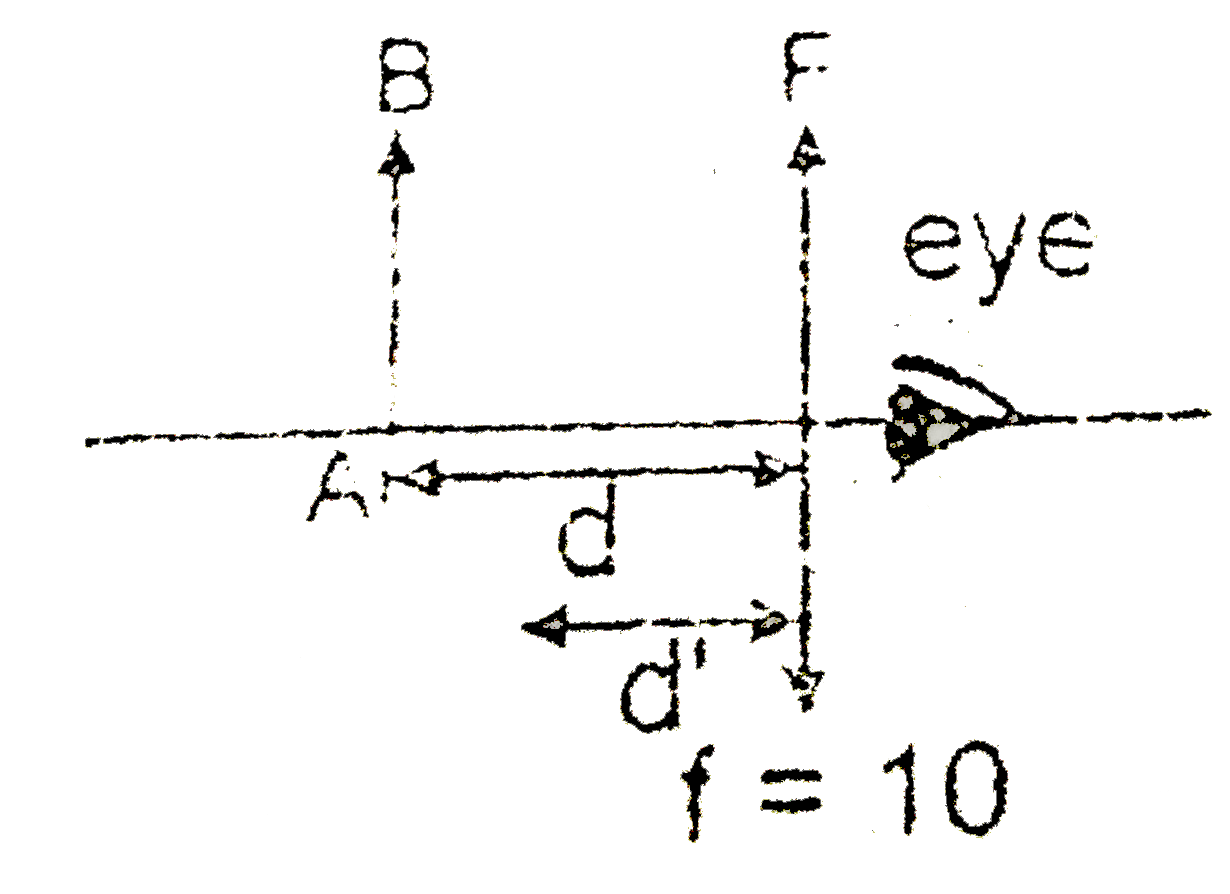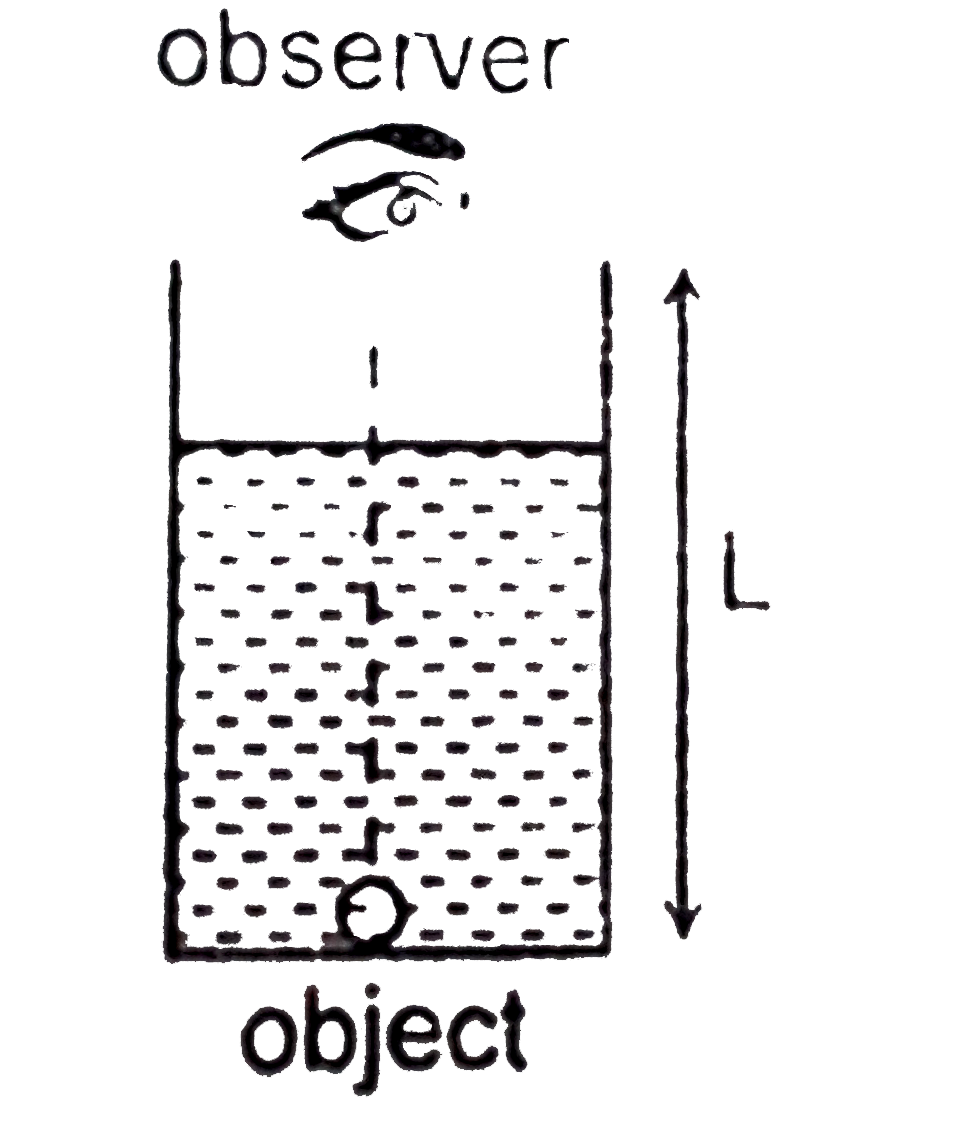A person places a green filter over one eye and a red filter over the other eye and looks at an object. Which apparent colour of the object will be seen ?
To solve the question of what color an object will appear when viewed through a green filter over one eye and a red filter over the other eye, we can break it down into the following steps:
1. Understanding Filters:
- A filter allows certain wavelengths of light to pass through while absorbing others. A red filter will only allow red light to pass and will absorb all other colors. Similarly, a green filter will only allow green light to pass and will absorb all other colors.
2. Light Source:
- When the person looks at an object, it is illuminated by white light, which contains all colors of the spectrum.
3. Effect of the Red Filter:
- The eye with the red filter will only perceive red light. If the object reflects red light, it will appear red to that eye. If it does not reflect red light, it will appear dark or black.
4. Effect of the Green Filter:
- The eye with the green filter will only perceive green light. If the object reflects green light, it will appear green to that eye. If it does not reflect green light, it will also appear dark or black.
5. Combining the Views:
- Since one eye sees through a red filter and the other through a green filter, the brain combines the inputs from both eyes. If the object does not reflect both red and green light, it will not appear in a color that can be perceived by both filters.
6. Conclusion:
- If the object does not reflect both red and green light, it will appear black when viewed through the combination of both filters. If the object reflects only one of the colors (red or green), it will appear in that color to the respective eye, but the overall perception will still be influenced by the other eye seeing through the opposite filter.
Final Answer:
The object will appear black when viewed through a green filter over one eye and a red filter over the other eye.
- A filter allows certain wavelengths of light to pass through while absorbing others. A red filter will only allow red light to pass and will absorb all other colors. Similarly, a green filter will only allow green light to pass and will absorb all other colors.
- When the person looks at an object, it is illuminated by white light, which contains all colors of the spectrum.
- The eye with the red filter will only perceive red light. If the object reflects red light, it will appear red to that eye. If it does not reflect red light, it will appear dark or black.
- The eye with the green filter will only perceive green light. If the object reflects green light, it will appear green to that eye. If it does not reflect green light, it will also appear dark or black.
- Since one eye sees through a red filter and the other through a green filter, the brain combines the inputs from both eyes. If the object does not reflect both red and green light, it will not appear in a color that can be perceived by both filters.
- If the object does not reflect both red and green light, it will appear black when viewed through the combination of both filters. If the object reflects only one of the colors (red or green), it will appear in that color to the respective eye, but the overall perception will still be influenced by the other eye seeing through the opposite filter.
The object will appear black when viewed through a green filter over one eye and a red filter over the other eye.
Topper's Solved these Questions
- BOOK - ICSECHAPTER - NEURAL CONTROL AND CO-ORDINATION EXERCISE - NCERT EXERCISES WITH ANSWER45videos
NEURAL CONTROL AND CO-ORDINATION
- BOOK - ICSECHAPTER - NEURAL CONTROL AND CO-ORDINATION EXERCISE - NCERT EXERCISES WITH ANSWER (DIFFERENTIATE BETWEEN)11videos
NEURAL CONTROL AND CO-ORDINATION
- BOOK - ICSECHAPTER - NEURAL CONTROL AND CO-ORDINATION EXERCISE - TEST YOUR PROGRESS ( SHORT/LONG ANSWER TYPE QUESTIONS )70videos
NEURAL CONTROL AND CO-ORDINATION
- BOOK - ICSECHAPTER - MORPHOLOGY OF FLOWERING PLANTS EXERCISE - NCERT TEXTBOOK QUESTIONS WITH SOLUTIONS25videos
MORPHOLOGY OF FLOWERING PLANTS
- BOOK - ICSECHAPTER - NEURAL CONTROL AND COORDINATIONEXERCISE - (Review question) long answer20videos
NEURAL CONTROL AND COORDINATION
Similar Questions
If the eye is kept very close to a coverging lens (focal length =10cm) and at the optical centre of the lens and an object is kept at distance 'd' of the object from the lebs so that its image can be seen clearly by the defect free eye is :
 .View Solution
.View SolutionIf the eye is kept very close to a coverging lens (focal length =10cm) and at the optical centre of the lens and an object is kept at distance 'd' of the object from the lebs so that its image can be seen clearly by the defect free eye is :
 .View Solution
.View SolutionA cylinder is filled with a liquid of refractive index μ. The radius of the cylinder is decreasing at a constant rate K. The volume of the liquid inside the container remains constant at V. The observer and the object O are in a state of rest at a distance L from each other. When radius of cylinder is r the apparent velocity of the object as seen by the observer is
 View Solution
View SolutionWhat will be the colour of an object which appears green in white light and black in red light?
View SolutionExplain the motion of an object suspended by a cable that passes over a pulley and horizontally connected at the other end to a second object that rests on a smooth horizontal table. Derive expressions for tension in the cable and acceleration of the objects.
View SolutionIn an experiment to determine the focal length (f) of a concave mirror by the u−v method, a student places the object pin A on the principal axis at a distance x from the pole P. The student looks at the pin and its inverted image from a distance keeping his/her eye in line with PA. When the student shifts his/her eye towards left, the image appears to the right of the object pin. Then,
View SolutionA man with pure blue eyes and pure black hair marries a woman with black eyes and red hair. (black eyes are dominant over blue eyes and black hair over red hair). What will be the probabilities of phenotypes of the children?
View SolutionA plane glass is placed over a various coloured letters (Violet, green, yellow ,red ). The letter which appears to be raised more is
View SolutionA compound microscope uses an objective lens of focal length 4cm and eye lens of focal length 10cm. An object is placed at 6cm from the objective lens. Calculate magnifying power of compound microscope if final image is formed at the near point. Also, calculate length of the tube of compound microscope.
View SolutionIn a compound microscope, the focal length of the objective and the eye lens are 2.5cm and 5cm respectively. An object is placed at 3.75cm before the objective and image is formed at the least distance of distinct vision, then the distance between two lenses will be (i.e. length of the microscope tube )
View Solution

